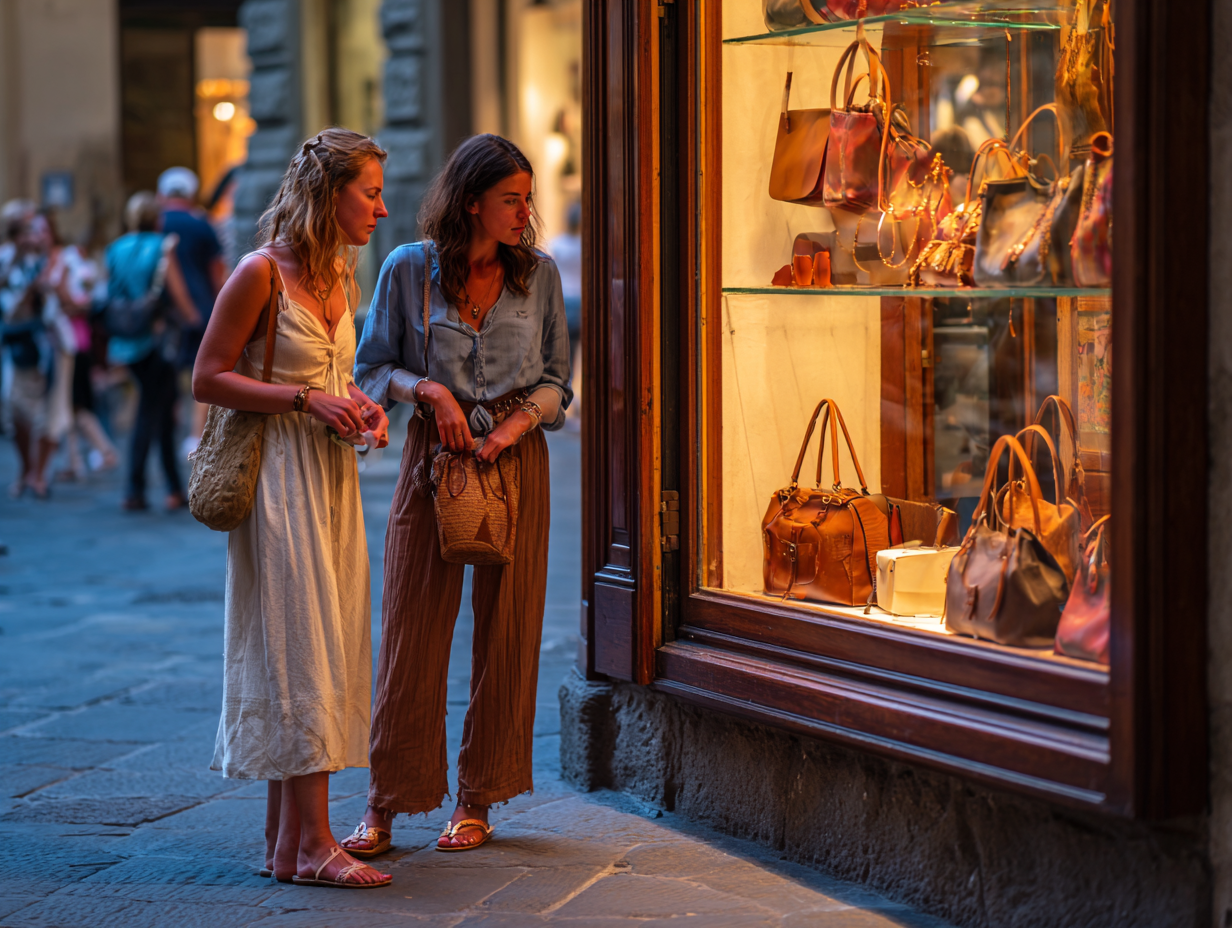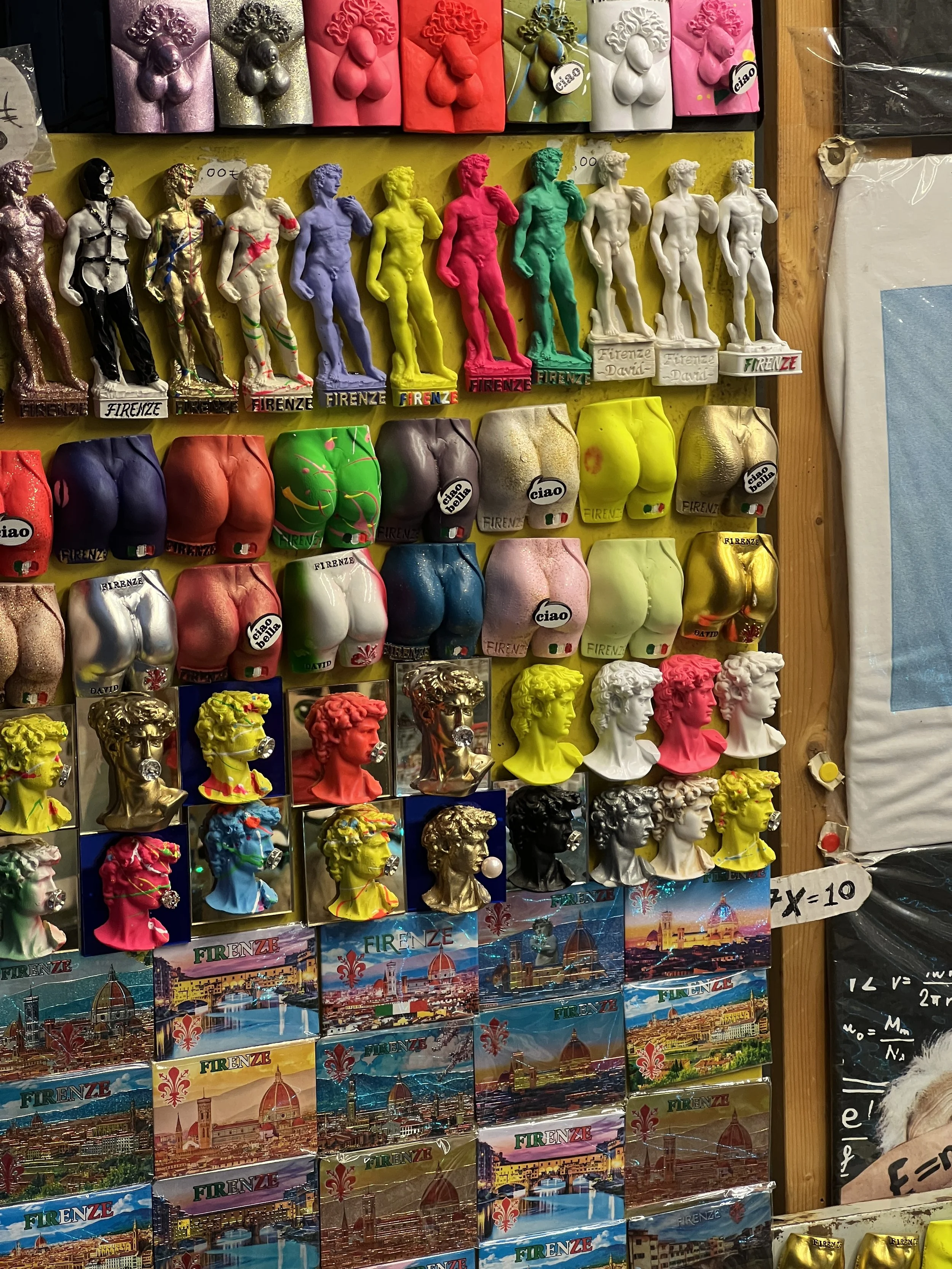How to Buy Authentic Florentine Crafts (Without the Guesswork)
Florence dazzles on the surface; the good news is that its depth is portable. The right object—handmade in Florence or Tuscany—carries skill, time and a little civic pride in its grain. The only obstacle is noise. This guide turns down the volume so you can buy with clarity.
Shopping in Florence like a local
Materials Tell the Truth
Leather should have natural grain and edges that are burnished or cleanly finished, not masked with thick paint. Paper should feel textured; marbling is organic, not a repeating print. Ceramics show the human hand in faint brush turns and a glaze that glows rather than shouts.
Quick rule: if a piece looks machine-perfect but feels lifeless, your instincts are working.
Provenance Before Price
Price matters, but process matters first. Ask how a piece was made: the tannery, the paper bath, the kiln. Authenticity in Florence is a conversation before it’s a receipt.
What to Look For—By Category
Leather accessories: even stitching, sturdy lining, hardware with a reassuring weight.
Jewelry: clean solder joins with no visible gaps; secure, smooth-closing clasps; even finishes without rough edges; stones seated level and firmly; weight that feels substantial for the size; skin-friendly metals (ask about alloys and plating); clear hallmarking where applicable.
Ceramics: balanced weight, stable base, brush traces that signal a maker—not a factory.
What to Avoid (So You Don’t Regret It)
Bags dangling outside at too-good-to-be-true prices. If it’s hanging on a rack in the street and costs less than dinner, it’s not Made in Italy, not artisanal, and not built to last. Quality leather—and the labor behind it—simply doesn’t add up to “ridiculous” prices.
Copy-paste inventories. When every item looks identical, you’re not looking at craft. Hand-made pieces carry small variations—finish, grain, brush, weight. Artisanal work is precious, unique, and produced in limited runs, not by the hundred.
Shops that can’t tell you the “how” and the “who.” If staff can’t explain how a piece was made, who made it, or the story behind the object, consider it a red flag. Authenticity in Florence is a conversation; silence usually means the piece has nothing to say.
Quick test: price, sameness, silence. If the price is implausible, the pieces are clones, and the seller is vague—walk on.
Why Curated Shopping Saves Your Time
Florence is dense with choice; curation spares you the second-guessing. Florence Factory brings ~40 artisans under one roof, with only pieces from Florence and Tuscany, all selected by in-house experts. One address, many craft languages—leather, jewelry, paper, ceramics, candles, hats, eyewear, apparel. Browse online or visit us in the city center.
Explore: Shop Tuscan Crafts • Jewelry • Leather Sandals • Paper • Ceramic • Interior • Hats.
The Traveler’s Shortlist
Decide your use-case (daily wallet, journal, espresso cups, scent).
Handle the piece—five minutes of touch beat fifty photos.
Ask one “how” question; you’ll hear either craft or marketing.
Choose things that age well: leather that burnishes, paper that records a life, ceramics that set a table.
Practicalities (So You Can Relax)
Languages in-store: Italian, English, Russian, Serbian, Spanish.
Hours & address: Mon–Sun 11 a.m.–7 p.m., Via dei Neri 6/8R, Florence.
Shipping: FedEx worldwide; cost varies by item and weight.
Tax free: available—ask our team in store.
Find us and more details on our About or Contact pages.Explore our curated selection—40 artisans, one address.


